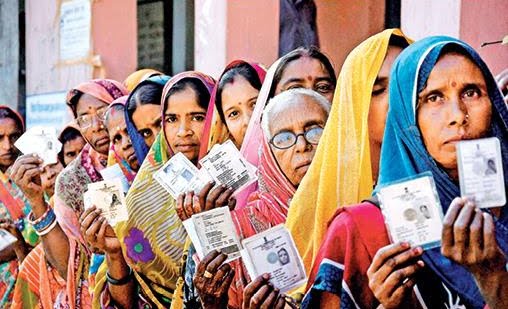The validity of women’s right to vote is almost universal now – no nation can withhold franchise from females without suffering a severe blow to their prestige in the international arena. Yet suffrage is not where the issue begins and ends – granting the right to vote legally is one matter and ensuring it in practical reality is another. The traditional appropriation of politics as a ‘male’ sphere has entrenched patriarchal structures that encourage men to be more participative than women.
The scenario in India is no different, with female voting rates lower than those of male voting ratios. The gap is becoming smaller and smaller, as the 2014 elections demonstrated, but numbers conceal important macro-l
Interestingly, it is strongly believed the number of Women who are registered to vote this year, though lower than the men registered to vote, will surpass the men in participation.
The 2011 census data reveals that 97.2
There are definite regional differences in the patterns of disenfranchisement, with the Hindi belt being the worst off. Uttar Pradesh, Maharashtra and Rajasthan have the lowest female registration rates, with the largest proportion of unregistered female voters from the eligible category. That these states also have some of the worst sex ratios in India is a pertinent fact that is reflected in the voting trend – in Uttar Pradesh, for example, on an average, there are 85,000 women who will not be voting in each constituency. In some states, like Jharkhand, the situation is so grave that for every woman who will be voting, there is another who will not be. Socio-cultural norms are prominent reasons why women may refrain from voting, as are traditional biases that relegate women to the ‘private’ sphere of the home.
Also read: Meet 7 Indian Suffragettes Of The British Suffrage Movement
Interestingly, it is strongly believed the number of women who are registered to vote this year, though lower than the men registered to vote, will surpass the men in participation. The higher turnout expected for women could be due to various reasons, with increased awareness and higher education coming off at the forefront. The demand for better representation for women may also be a huge encouraging factor for women to exercise their electoral rights. Another positive sign is that in some of the smaller states, the number of women registered to vote is higher than the proportion of men registered. While further research is required to ascertain the exact reasons for this, a cursory glance pushes regional variations in attitude and culture to the forefront.
The demand for better representation for women may also be a huge encouraging factor for women to exercise their electoral rights.
Thus, the 2019 elections pose a contradiction – a lower registration rate but an, estimated, greater turnout for women. The political backdrop is getting more complicated in each successive election year, and extra efforts need to be made to educate females to exercise their franchise – norms do not disappear in a day, nor are cultural prescriptions easy to overcome.
The question is how do you overcome these barriers, then? Do you make special allowances for women – such as allowing them to directly vote at polling stations, without registering beforehand, if they can prove they are 18 or above? Does it involve concerted innovation from the Election Commission, which has come out with and more measures to involve women in the voting process, before each election? Or does it entail greater incentives from the government itself, in terms of schemes that favour women’s involvement in the political process?
It is tricky to pinpoint the best method, it is debatable if there even is one carte blanche route to increase women’s participation in the democratic enterprise, but the fact that energies need to be concentrated to overcome the lower registration rates of
References
Featured Image Source: Daily Post
About the author(s)
Pallavi is a second year Political Science student struggling to graduate and her tumultuous relationship with her dog pushed her towards writing. She is an ardent lover of history who is trying to get rid of the internalized labels she grew up with.




